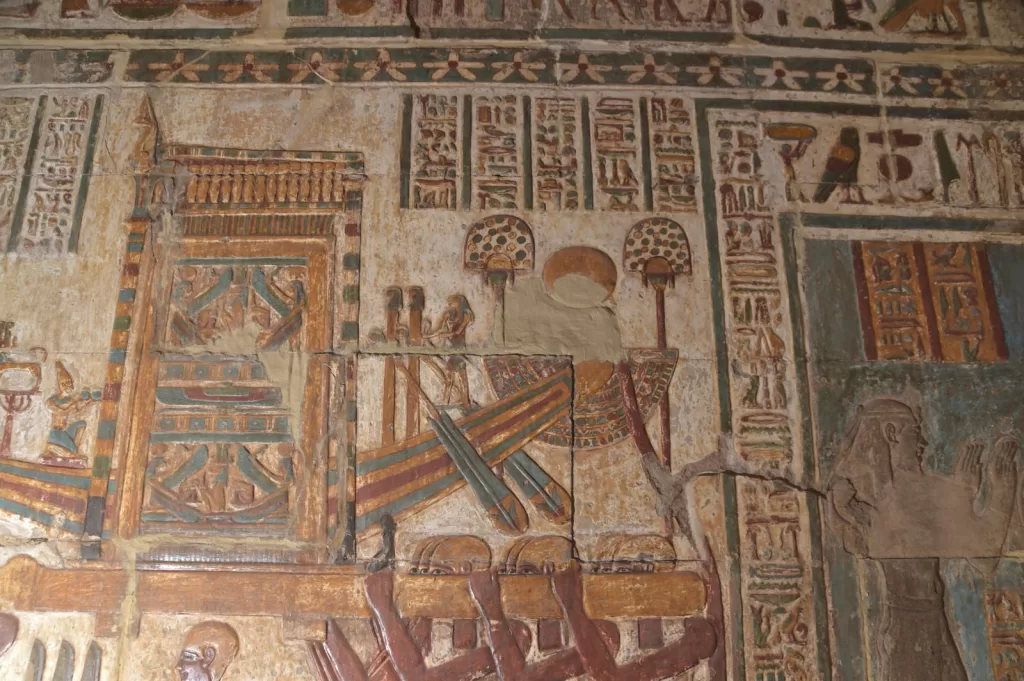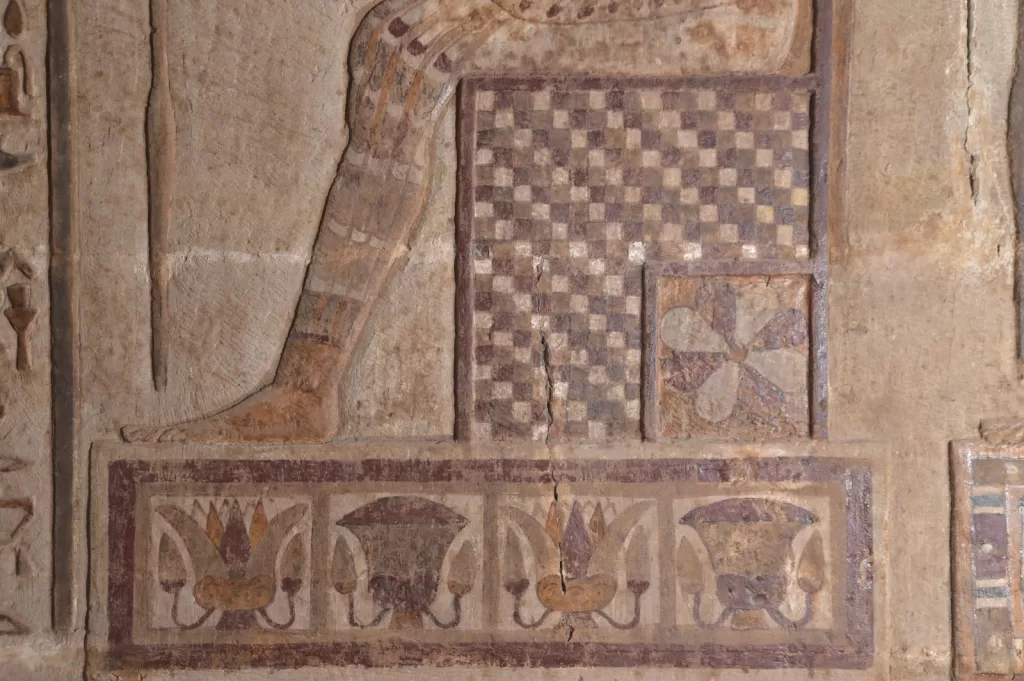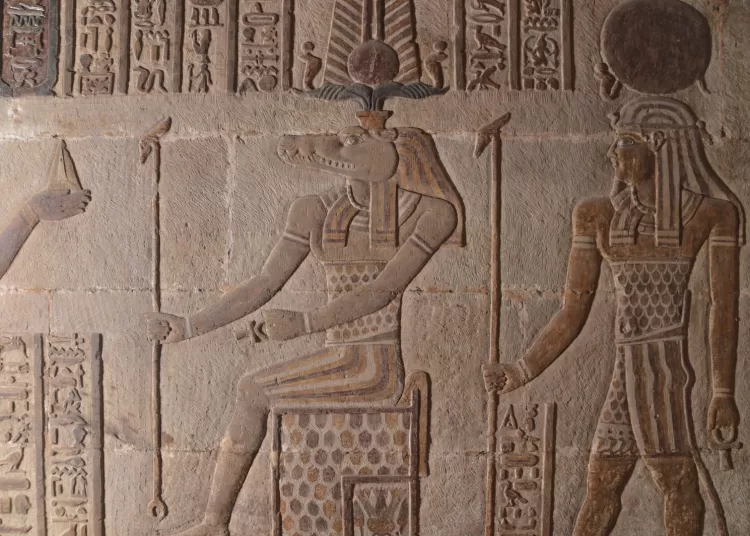In a groundbreaking archaeological discovery, stunning depictions of ancient kings, gods, and their elaborate regalia have been revealed in the Temple of Esna, south of Luxor.
The intricate images, hidden for long centuries, showcase majestic clothing designs, crowns, and thrones, as well as priests in ceremonial processions carrying the sacred boat of the god Khnum.
The discovery is part of a six-year restoration effort led by the Egyptian-German archaeological mission, a joint venture between Egypt’s Supreme Council of Antiquities and the University of Tübingen. The mission aims to restore and document the timeworn temple, unveiling layers of history that have remained concealed for millennia.

The Temple of Esna, dedicated to the ram-headed god of creation, Khnum, began construction under King Tuthmosis III in the 18th Dynasty but wasn’t completed until the Ptolemaic and Roman periods, around 250 A.D.
The newly uncovered inscriptions don’t only offer rare insights into the temple’s ancient significance but shed more light on Egypt’s rich cultural legacy as well.
The restoration has also uncovered vibrant original colours on the temple’s astronomical roof and columns, revealing detailed zodiac signs and hieroglyphic scenes that were long obscured by dirt and dust.
Minister of Tourism and Antiquities Sherif Fathy commended the discovery as a crucial step forward in both historical research and the country’s cultural tourism efforts.
This breathtaking discovery invites visitors from around the world to witness the grandeur of ancient Egyptian artistry and architecture in its full glory, offering a glimpse into a bygone era of gods and kings.








Discussion about this post